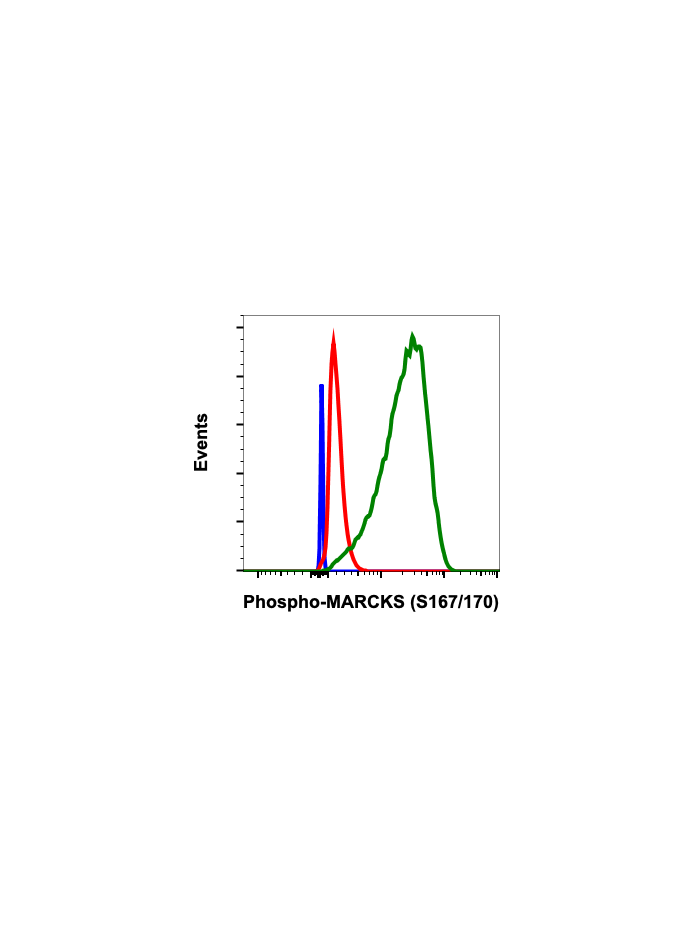Phospho-MARCKS (Ser167/170) (C9) rabbit mAb
From
$210.00
In stock
Only %1 left
SKU
2446
MARCKS (myristoylated alanine-rich C kinase substrate) is a major PKC substrate expressed in all eukaryotic cells(1,2). It binds to and cross-links actin filaments to serve as a bridge between Ca2+/calmodulin and PKC signaling and attenuates phosphatidylinositol 4,5-bisphosphate plasma membrane signaling (3). MARCKS is involved with cell mobility, phagocytosis, membrane traffic, cell adhesion, and mitogenesis. Ser159, 163, 167 and 170 of MARCKS are phosphorylated by PKC in response to cell groeth and cellular stress (4). MARCKs phosphorylation is believe to induce its tranlocation from plasma membrane to cytoplasm.
| Applications | Flow Cytometry, WB |
|---|---|
| Clone | MARCKSS167170-C9 |
| Format | Unconjugated |
| Validated Reactivity | Human, Mouse, Rat |
| Cross Reactivity | Predicted to work with mouse, rat and other homologues. |
| Detection | Anti-Rabbit IgG |
| Clonality | Monoclonal |
| Immunogen | A synthetic phospho-peptide corresponding to residues surrounding Ser167/170 of human phospho MARCKS |
| Formulation | 1X PBS, 0.02% NaN3, 50% Glycerol, 0.1% BSA |
| Isotype | Rabbit IgGk |
| Preparation | Protein A+G |
| Recommended Usage | 1µg/mL – 0.001µg/mL. It is recommended that the reagent be titrated for optimal performance for each application. See product image legends for additional information. |
| Storage | -20ºC |
| Pseudonyms | Myristoylated alanine-rich C-kinase substrate, Protein kinase C substrate, PKCSL, 80 kDa protein light chain, MACS, PRKCSL |
| Uniprot ID | P29966 |
| References | 1. El Amri M et al., (2018) J Biomed Sci 25(1):43. doi: 10.1186/s12929-018-0445- 2. Aderem A. (1992) Cell 71:713-6. 3. Hartwig JH, et al., (1992) Nature 356:618-22. 4. Bhat NR. et al., (1991) J Neurisci Res 30: 447-54 |
Write Your Own Review

